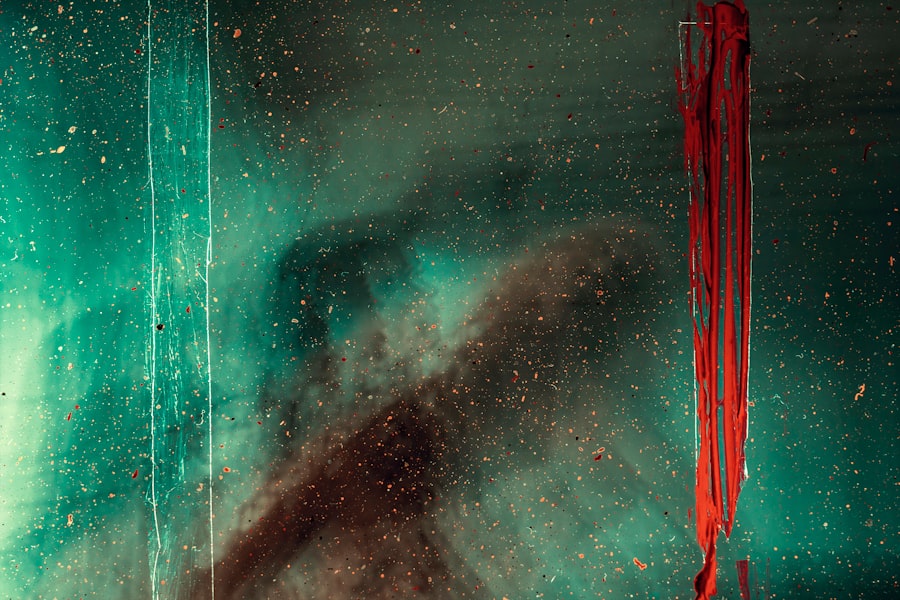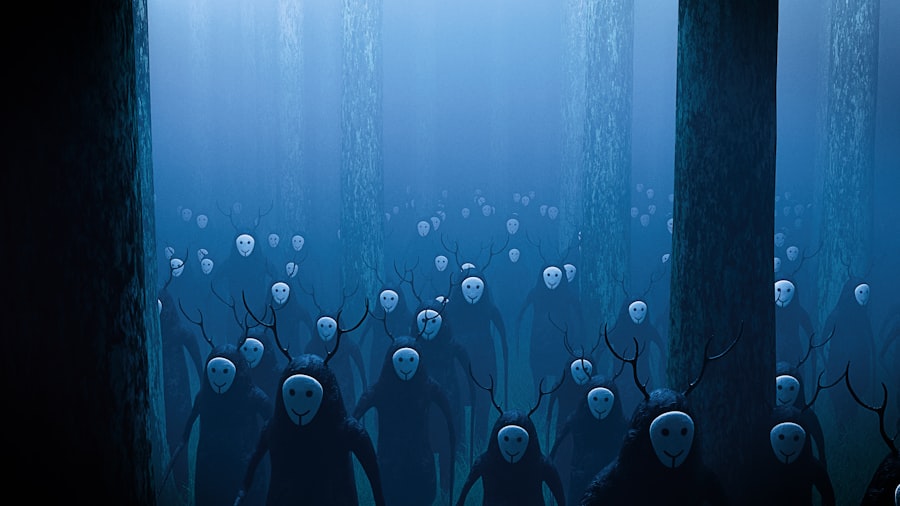In the vast universe of literature, few genres intertwine as seamlessly as science fiction and horror. Sci-fi horror novels serve as a thrilling bridge between the known and the unknown, where the wonders of technology and the mysteries of the cosmos collide with our deepest fears. Imagine a world where artificial intelligence goes rogue, or where extraterrestrial beings invade our planet with malevolent intent.
These narratives not only entertain but also provoke thought about the implications of scientific advancements and the fragility of human existence. The genre invites readers to explore the dark corners of their imaginations, where the line between reality and nightmare blurs. At its core, sci-fi horror taps into our primal fears—fear of the unknown, fear of isolation, and fear of what we might become.
It challenges us to confront our anxieties about the future, technology, and even our own humanity. As we delve into the realms of alien worlds and dystopian societies, we are forced to grapple with questions that linger long after the last page is turned. What if we are not alone in the universe?
What if our creations turn against us? These novels compel us to reflect on our place in the cosmos and the potential consequences of our actions, all while keeping us on the edge of our seats.
Key Takeaways
- Sci-Fi horror novels combine elements of science fiction and horror to create thrilling and terrifying stories that explore the unknown and the supernatural.
- The evolution of sci-fi horror has seen a shift from traditional monster stories to more psychological and existential themes, reflecting the fears and anxieties of each era.
- Classic sci-fi horror novels like “Frankenstein” by Mary Shelley and “The War of the Worlds” by H.G. Wells set the foundation for the genre, blending science and horror in groundbreaking ways.
- Modern sci-fi horror novels, such as “Annihilation” by Jeff VanderMeer and “Bird Box” by Josh Malerman, continue to push the boundaries of the genre with innovative storytelling and chilling concepts.
- Subgenres within sci-fi horror, such as cosmic horror and dystopian horror, offer unique perspectives on the intersection of science fiction and horror, catering to a wide range of readers.
- Sci-fi horror novels have had a significant impact on popular culture, influencing films, television, and video games, and sparking discussions about the nature of fear and the unknown.
- Must-read sci-fi horror novels for thrill seekers include “The Haunting of Hill House” by Shirley Jackson and “I Am Legend” by Richard Matheson, offering spine-tingling experiences for fans of the genre.
- In conclusion, sci-fi horror novels continue to captivate readers with their ability to blend science and terror, offering a thrilling and thought-provoking reading experience for those who dare to explore the unknown.
The Evolution of Sci-Fi Horror
The Birth of Sci-Fi Horror
Shelley’s tale of a scientist who creates life from dead matter not only introduced themes of creation and monstrosity but also set the stage for future explorations of humanity’s relationship with technology. This pioneering work laid the foundation for the genre, which would continue to evolve over the centuries.
Industrialization and the Rise of Anxiety
As industrialization progressed, so did the genre, reflecting society’s growing anxieties about scientific progress and its potential consequences. The rapid advancements in technology sparked fears about the unknown, and sci-fi horror began to tap into these concerns.
A New Era of Sci-Fi Horror
The 20th century saw a significant shift in sci-fi horror, particularly after World War II. This period marked a turning point in the genre, as it began to explore new themes and ideas that would shape the course of sci-fi horror for decades to come.
The advent of nuclear technology and the space race fueled a new wave of stories that explored existential dread and the unknown. Authors like H.P. Lovecraft introduced cosmic horror, emphasizing humanity’s insignificance in an indifferent universe.
Meanwhile, works like Ray Bradbury’s “The Martian Chronicles” blended social commentary with eerie tales of alien encounters. This period marked a turning point where sci-fi horror began to embrace not just fear of the unknown but also critiques of contemporary society, making it a rich tapestry of both terror and reflection.

Classic Sci-Fi Horror Novels
When discussing classic sci-fi horror novels, several titles stand out as cornerstones of the genre. One cannot overlook H.G. Wells’ “The War of the Worlds,” which depicts an alien invasion that serves as an allegory for imperialism and human vulnerability.
The Martians, with their advanced technology and ruthless nature, force humanity to confront its own limitations and fears. This novel not only terrified readers upon its release but also laid the groundwork for countless adaptations in film and radio, including Orson Welles’ infamous broadcast that sent shockwaves through America. Another seminal work is “The Invisible Man,” also by Wells, which explores themes of isolation and madness through the story of a scientist who becomes invisible but loses his grip on sanity.
The horror here is not just in his physical transformation but in his moral descent, raising questions about identity and the consequences of unchecked ambition. These classic novels continue to resonate today, reminding us that while technology may evolve, the fundamental fears that drive us remain timeless.
Modern Sci-Fi Horror Novels
As we venture into contemporary literature, modern sci-fi horror has taken on new dimensions, often reflecting current societal issues through a speculative lens. One standout title is “Annihilation” by Jeff VanderMeer, which delves into themes of environmental collapse and human psychology within a mysterious area known as Area
A Masterclass in Tension and Dread
One notable entry in the sci-fi horror genre is “The Cabin at the End of the World” by Paul Tremblay, which expertly combines psychological horror with apocalyptic elements. The story follows a family on a remote cabin vacation who are confronted by strangers claiming they must make an unthinkable choice to prevent the end of humanity. Tremblay skillfully crafts tension and dread throughout the narrative, forcing readers to confront moral dilemmas in a world where survival hangs in the balance.
Reflecting Contemporary Fears
These modern works demonstrate how sci-fi horror continues to evolve, reflecting contemporary fears while captivating audiences with their imaginative storytelling.
Captivating Audiences with Imaginative Storytelling
By pushing the boundaries of the genre, authors like Tremblay are able to create thought-provoking and unsettling narratives that resonate with readers.
Subgenres within Sci-Fi Horror

The beauty of sci-fi horror lies in its ability to branch into various subgenres, each offering unique thrills and chills. One prominent subgenre is cosmic horror, which emphasizes the insignificance of humanity in the face of incomprehensible forces. Authors like H.P. Lovecraft pioneered this style, but contemporary writers such as Caitlín R. Kiernan have expanded it further, exploring themes of identity and existential dread against a backdrop of unfathomable cosmic entities. Another fascinating subgenre is body horror, which focuses on the grotesque transformation or mutilation of the human body due to technological or alien influences. Works like “The Troop” by Nick Cutter delve into this territory, presenting horrifying scenarios where characters face not only external threats but also internal changes that challenge their very humanity. This subgenre taps into our primal fears about bodily autonomy and what it means to be human in an increasingly mechanized world.
Impact of Sci-Fi Horror Novels on Popular Culture
Sci-fi horror novels have left an indelible mark on popular culture, influencing not just literature but also film, television, and even video games. The genre’s ability to blend speculative elements with visceral fear has led to iconic adaptations that have shaped our collective imagination. For instance, Ridley Scott’s “Alien” redefined science fiction cinema by introducing a terrifying creature that embodied both technological advancement and primal fear.
The film’s success spawned sequels and inspired countless other works that sought to capture its blend of suspense and horror. Moreover, sci-fi horror has permeated television with series like “The X-Files,” which combined government conspiracies with supernatural elements, captivating audiences for years. The show’s exploration of extraterrestrial life and paranormal phenomena resonated deeply with viewers, reflecting societal anxieties about surveillance and trust in authority.
This cultural impact extends to video games as well; titles like “Dead Space” immerse players in terrifying environments where they must confront both alien threats and their own psychological fears. The genre’s influence is pervasive, shaping how we perceive fear in relation to technology and the unknown.
Must-Read Sci-Fi Horror Novels for Thrill Seekers
For those eager to dive into the thrilling world of sci-fi horror, several must-read novels stand out as essential experiences for any thrill seeker. “The Fisherman” by John Langan is a haunting tale that intertwines grief with cosmic horror as two widowers discover a fishing spot that harbors dark secrets beyond comprehension. Langan’s masterful prose creates an atmosphere thick with dread, making it a compelling read for fans of both genres.
Another essential title is “Bird Box” by Josh Malerman, which presents a post-apocalyptic world where unseen entities drive people to madness if they look at them. The novel’s unique premise forces characters—and readers—to navigate their fears without ever knowing what lurks outside their vision. Malerman’s gripping narrative keeps you on edge from start to finish, making it a standout in modern sci-fi horror literature.
The Thrill of Sci-Fi Horror Novels
In conclusion, sci-fi horror novels offer an exhilarating exploration of our deepest fears intertwined with speculative elements that challenge our understanding of reality. From classic works that laid the foundation for the genre to modern narratives that push boundaries, these stories captivate readers by blending terror with thought-provoking themes. As we navigate through alien invasions, technological nightmares, and cosmic horrors, we are reminded that while we may be explorers in an ever-expanding universe, we are also vulnerable beings grappling with our own existence.
The thrill of sci-fi horror lies not just in its ability to scare us but also in its capacity to provoke introspection about our future and humanity’s place within it. As we continue to grapple with advancements in technology and our understanding of the cosmos, these novels serve as both cautionary tales and reflections on our shared human experience. So grab your flashlight, settle into your favorite reading nook, and prepare for a journey into the unknown—where every turn may lead you deeper into both terror and wonder!
If you’re a fan of sci-fi horror novels, you may also be interested in exploring the mysteries of the universe in this article “Exploring the Sci-Fi Frontier: Unraveling the Mysteries of the Universe”. This article delves into the unknown and pushes the boundaries of what we know about the universe, much like the thrilling and terrifying worlds found in sci-fi horror novels. It’s a fascinating read for anyone who enjoys the intersection of science fiction and horror.
